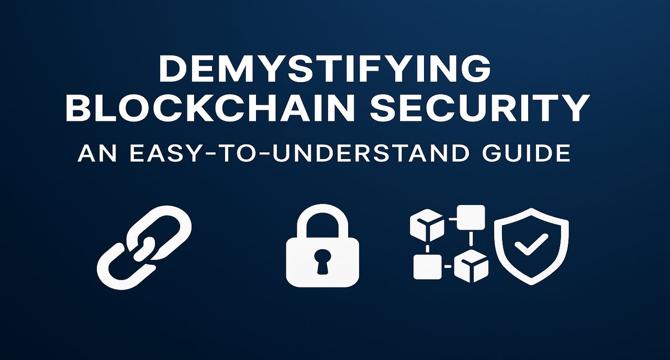Programming News
Dev
406

Image Credit: Dev
How to mass convert BMP to JPG (Tutorial)
- BMP images are known for their simplicity and compatibility, stored in an uncompressed format leading to large file sizes.
- Converting BMP images to JPG format reduces file size while maintaining image quality.
- The tutorial guides on using Java with JDeli to mass convert BMP files to JPG effortlessly.
- Options like configuration settings and command line conversion for bulk BMP to JPG conversion are also demonstrated.
Read Full Article
24 Likes
Hackernoon
54

Image Credit: Hackernoon
TypeScript Showdown: Type vs Interface — Why 'Type' Wins
- In the TypeScript debate of 'TypeScript Type vs Interface,' 'Type' comes out as the winner due to its flexibility, expressive power, and alignment with modern practices.
- Type and interface both define object shapes or function signatures, but type offers more versatility in describing unions, primitives, tuples, mapped types, and conditional types.
- Type is safer and prevents accidental redefinitions, while interface supports declaration merging which can lead to hard-to-debug surprises.
- Type can extend both types and interfaces, making it more consistent for various scenarios, especially in functional and React patterns.
- Although type is generally preferred, interface still holds value in public APIs, libraries, OOP patterns, and classes that implement contracts.
- In OOP-heavy codebases, interface is favored for its semantic clarity and support for extension via extends or declaration merging.
- Type in TypeScript excels in handling complex scenarios like unions, tuples, mapped and conditional types, making it a preferred choice in most cases.
- Unless exposing a public OOP-style API or requiring declaration merging, it is recommended to stick with type for better consistency and clarity in codebases.
- For more insights on TypeScript practices, the article suggests exploring topics like asynchronous JavaScript, overloading vs overriding, and effective use of 'as const' in TypeScript.
- Overall, the article advocates for the usage of 'type' over 'interface' in TypeScript codebases, emphasizing its superior handling of various type scenarios and prevention of unexpected behaviors.
Read Full Article
3 Likes
Nordicapis
288

10+ Data Regulations All API Developers Should Know About
- Businesses can no longer prioritize data harvesting over data privacy, with the rise of data regulations globally.
- Developers face potential backlash, hefty fines, and legal action for disregarding data privacy legislation, as APIs are increasingly targeted by hackers.
- Instances like the massive data scrape from LinkedIn's API and Facebook's API vulnerability highlight the risks of non-compliance.
- Compliance is crucial for data protection, trust preservation, and avoiding regulatory consequences in the evolving realm of data regulation.
- Key regulations include GDPR, CCPA, HIPAA, FERPA, PSD2, LGPD, PIPEDA, PIPL, DPDP, covering aspects like data consent, security, and breach notification.
- API developers must comply with various regulations to handle personal data lawfully and securely, even outside their jurisdiction.
- The ever-expanding landscape of data regulation includes upcoming laws in different countries and regions, emphasizing user consent and safeguarding.
- Maintaining compliance necessitates ongoing adaptation to changing regulations and implementing best practices in API development.
- Legislation aims at similar goals across various regions, focusing on user consent, limiting data exposure, and safeguarding against breaches.
- Adhering to encryption, proper authorization, least privilege principles, and minimizing data exposure aids in meeting compliance requirements.
Read Full Article
17 Likes
Hackernoon
329

Image Credit: Hackernoon
Cracking the Code on Blockchain Security: A Plain-English Primer
- Blockchain is a distributed digital ledger that ensures tamper-evident and irreversible transactions.
- Blockchain is secure due to immutability via hashing and chaining blocks together to invalidate any tampering attempts.
- Consensus mechanisms like Proof of Work ensure network security by requiring computational work for block authentication.
- Blockchain security risks include smart contract vulnerabilities, phishing attacks, and the importance of user safety measures.
Read Full Article
19 Likes
Discover more
- Software News
- Web Design
- Devops News
- Open Source News
- Databases
- Cloud News
- Product Management News
- Operating Systems News
- Agile Methodology News
- Computer Engineering
- Startup News
- Cryptocurrency News
- Technology News
- Blockchain News
- Data Science News
- AR News
- Apple News
- Cyber Security News
- Leadership News
- Gaming News
- Automobiles News
Hackernoon
114

Image Credit: Hackernoon
Lock Down Your Wi-Fi: 2025’s Home Network Security Checklist
- Securing your home network in 2025 involves updating default router settings such as password and network name.
- Using strong passwords with WPA3 encryption is recommended to prevent hacking and eavesdropping.
- Keeping your router's firmware updated is crucial to prevent known security vulnerabilities.
- Setting up a separate guest network can isolate guests from your main network for added security.
- Ensuring all smart home devices have secure passwords, updated firmware, and connecting them to the guest network can enhance security.
- Using a strong firewall, enabling device-level security, and employing DNS filters or parental controls are essential security measures.
- Disabling unused features like UPnP, WPS, and remote management can reduce the risk of attacks.
- Employing network monitoring tools and VPNs on public networks are recommended for monitoring and encrypting traffic.
- Backing up critical data periodically is advised to protect against data loss from ransomware or hardware failure.
- Overall, developing good security habits like regular checks, software updates, and strong passwords is key to a secure home network.
Read Full Article
6 Likes
Hackernoon
242

Image Credit: Hackernoon
Hack Your App Before Hackers Do: 2025's Mobile Pentesting Playbook
- The handbook provides a step-by-step tutorial on pentesting mobile apps in 2025, including tools setup, information gathering, static analysis, dynamic analysis, API testing, local data storage analysis, reverse engineering, code injection, and reporting.
- Tools like ADB, JADX, APKTool, MobSF, Burp Suite, and Frida are recommended for various stages of mobile app pentesting.
- Various techniques including API call interception, SSL pinning bypass, dynamic testing, and API security testing using tools like Curl and Burp Suite are covered.
- The importance of organized reporting following OWASP MASVS standards, documenting findings with tools like Dradis or Faraday, and common mobile vulnerabilities such as insecure storage, hardcoded secrets, and code injection are highlighted.
Read Full Article
14 Likes
Hackernoon
302

Image Credit: Hackernoon
Argon2 in Practice: How to Implement Secure Password Hashing in Your Application
- Argon2 is a memory-hard password hashing algorithm designed to enhance security by using large amounts of memory while hashing, making it difficult for attackers to crack passwords.
- Argon2 outshines older algorithms like bcrypt and PBKDF2 by offering memory-hardness, tunable parameters, and defense-in-depth against various attacks.
- Implementing Argon2 involves choosing from its three variants - Argon2d, Argon2i, and Argon2id - based on specific use cases and requirements.
- Selecting the appropriate Argon2 library for your programming language is crucial to ensure a secure and efficient implementation.
- The implementation process includes steps like generating a cryptographically secure salt, setting up Argon2 parameters, and calling the Argon2 hash function.
- Verifying passwords securely involves matching parameters and salts to hash the plain password and comparing the resulting hash with the stored hash using constant-time comparison.
- Best practices for implementing Argon2 include not storing raw parameters separately, benchmarking with real production hardware, evolving parameters over time, and setting a maximum password length.
- Testing and validating your Argon2 implementation involves conducting basic unit tests, stress testing for performance and memory consumption, and being aware of common testing pitfalls.
- Security is an ongoing process, and it's essential to stay updated on security best practices and evaluate your Argon2 implementation periodically for adjustments.
- For further resources on Argon2 and password security, exploring official documentation, cryptographic tools, and resources like OWASP can provide valuable insights.
Read Full Article
18 Likes
Dev
202

Image Credit: Dev
Indexing in MySQL for PHP Developers: Do’s and Don’ts
- MySQL indexing is a crucial aspect for PHP developers to optimize database performance.
- Indexing helps in quick searching and retrieval of data by creating a structured way of accessing information.
- Dos of MySQL indexing include indexing columns used in WHERE, ORDER BY, and GROUP BY clauses.
- Utilizing composite indexes for multiple column queries can enhance performance.
- Indexing foreign keys speeds up join processes for table relationships.
- Regularly analyzing queries with EXPLAIN and optimizing indexes is essential for efficient database operations.
- Avoid over-indexing to prevent negative impacts on INSERT, UPDATE, and DELETE operations.
- Avoid indexing columns with low cardinality and high repetition for better efficiency.
- Be cautious when using functions or expressions in WHERE clauses to ensure effective index utilization.
- Consider data types compatibility for indexed columns to prevent MySQL from using a complete table scan.
Read Full Article
12 Likes
Hackernoon
288

Image Credit: Hackernoon
Why I Rebuilt My Team’s Entire Data Stack and Would Do It Again
- The author shares their experience of rebuilding their team's data stack after encountering discrepancies in reports, highlighting the importance of trust in data.
- The overhaul was driven by the realization that the issue was with the data pipeline, which was a tangled mess of shadow workflows causing a lack of observability.
- The transformation involved building accountability into the system, adopting federated governance with shared standards, and emphasizing observability through real-time alerts and end-to-end lineage.
- The author concludes by emphasizing the need for visibility, collaboration, and treating data pipelines as products to ensure reliable, explainable, and trusted data for better decision-making.
Read Full Article
17 Likes
Javacodegeeks
64

Image Credit: Javacodegeeks
Will WebAssembly Replace Java in Serverless Environments?
- WebAssembly (Wasm) excels in cold start performance with near-instant start compared to Java in serverless environments.
- Java's mature ecosystem and strong tooling make it the preferred choice for many enterprise applications over WebAssembly.
- Consider using WebAssembly for ultra-fast cold starts, lightweight workloads, and if you are using Rust, Go, or AssemblyScript.
- While WebAssembly is gaining traction in specific areas, Java will remain dominant for monolithic serverless apps, enterprise integrations, and long-running functions.
Read Full Article
3 Likes
Dev
1.1k

Image Credit: Dev
Can I Combine CSS and JavaScript Files in WordPress?
- Having multiple CSS files in WordPress can slow down your website due to the increased number of requests to the server.
- To combine CSS files, create a new master CSS file, copy the contents of existing files, update WordPress to use the new file, and consider minifying the CSS for improved loading times.
- The same principles apply to combining JavaScript files in WordPress. Create a new master JavaScript file, combine the scripts, update WordPress to load the new file, and test functionality post-merge.
- Optimizing your site further can be done by using caching plugins, CDNs, and ensuring CSS specificity and script dependencies are maintained. Combining CSS and JavaScript files can enhance website speed and SEO ranking.
Read Full Article
20 Likes
Medium
978

Image Credit: Medium
NFT Marketplace News in 2025: How Liquid Fixed What the OpenSea CEO Overlooked
- OpenSea CEO admitted that NFTs lack liquidity and flexibility, leading traders towards meme coins.
- Liquid NFT Marketplace addresses NFT liquidity issues by locking 50% of mint value and using fees to grow NFT value over time.
- OpenSea charges a 2.5% transaction fee on each NFT sale.
- Meme coins are being added to OpenSea 2 for their liquidity and fast trading features that NFTs lacked.
Read Full Article
6 Likes
Medium
390

Image Credit: Medium
Gemini 2.5 Pro: Your AI Superhero Unleashed!
- Gemini 2.5 Pro is an advanced AI tool that handles text, images, audio, video, and code efficiently, suitable for students, coders, or anyone curious.
- Gemini offers features like answering questions, analyzing images, and writing code, powered by Google's Trillium TPU, providing speed and creative solutions.
- Compared to GPT-4o and Claude 3.5, Gemini excels in coding, research, and multimodal capabilities, making complex tasks simple and efficient.
- Gemini 2.5 Pro is transforming lives by enabling quick game development and providing step-by-step explanations for complex subjects like calculus.
Read Full Article
23 Likes
Medium
260

Image Credit: Medium
Hello, my name is Eva
- The hospitality industry is incorporating AI-powered interactive kiosks with voice and face recognition technology to enhance guest experiences.
- These AI-powered kiosks are revolutionizing the check-in and check-out processes, offering faster, more efficient, and personalized services to hotel guests.
- They provide personalized experiences by accessing guests' past preferences, room preferences, special requests, and loyalty program status.
- The integration of AI-powered kiosks in the hospitality industry ensures competitiveness, meets current demands, and prepares for future advancements in guest experience and operational efficiency.
Read Full Article
15 Likes
Medium
320

Image Credit: Medium
Hello, my name is Eva -I’m ChatGPT with a friendly face
- The hospitality industry is adopting AI-powered interactive kiosks with voice and face recognition technology to enhance guest experiences.
- These AI kiosks revolutionize traditional check-in/out processes, offering faster, more efficient, and personalized services like ChatGPT with a friendly face.
- A key feature of AI kiosks is their ability to provide personalized experiences by accessing guests' preferences, special requests, and loyalty program status.
- The integration of AI kiosks in hotels ensures competitiveness by meeting current service demands and preparing for future advancements in guest experience and operational efficiency.
Read Full Article
19 Likes
For uninterrupted reading, download the app